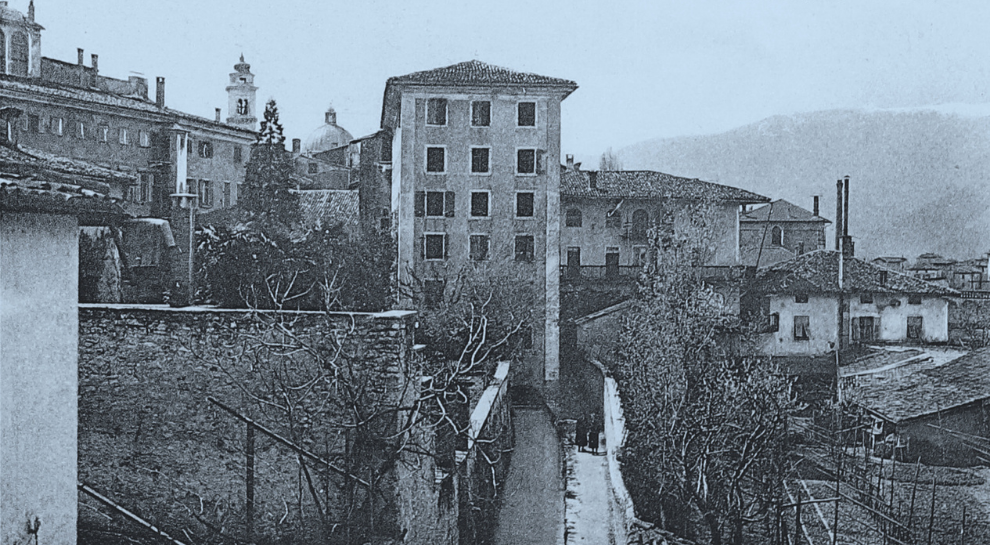Silk Factory Colle-Masotti
Since 1770 in the Santa Maria district
The magnificent Colle-Masotti silk company is located on the left bank of the Leno stream, on the Paiari canal, in the Santa Maria district.
The Colle-Masotti company is the only one in Rovereto that encompasses the entire yarn processing cycle: a fire spinning mill with eight chimneys, a spinning-turning mill and a trading house.
The fire spinning mill was demolished in 1833 to make way for a steam spinning mill with 30 ‘cauldrons’, with large windows that illuminated the work stations.
The building, now converted for residential use, has retained its original character and the spinning mill is still the most interesting building in the complex.
It housed the spinning, weaving and twisting of silk. It is not clear whether there was also automated machinery for spinning, i.e. transferring the raw hanks onto reels.
The building had six storeys above ground level, and the structure enclosed three shafts with their spinning and twisting machinery, driven by a water wheel moved by the water of the irrigation ditch flowing inside the building in the basement. In 1849, the factory had 3 shafts, 30 passes, 2,160 spindles for spinning and 1,080 spindles for twisting and 12 men and 36 women worked in it. The factory’s output was 1,000 pounds of weft and 8,000 pounds of organzine.
The fixed cages, placed around the revolving carousels, were 4.80 m in diameter and each consisted of 18 vertical uprights, also known as ‘columns’, placed around the circumference at a distance of 90 cm from each other. Each floor housed two to three passes, or working rings. Ventilation and lighting were provided by a large number of windows, which characterised the façades of the building.
It is almost certain that the spinning mills in Rovereto, all characterised by the same typological features, were custom-built around the machinery, with the precise purpose of containing it. These buildings are therefore not existing buildings converted to industrial use, but rather structures built with the precise purpose of housing the spinning-twining of silk thread.
Today, only the room that housed the northern and central floor plans of the spinning mill has been preserved; in the remaining part, living quarters have been built. The last original wooden elements have thus been lost, which included almost all the uprights of the fixed cage and part of the attic between the fourth and fifth floors.
Towards Via Santa Maria, there is the main building where the Colle family’s living quarters, the company’s offices and the finished product warehouses were located.
Want to know more? Listen to the podcast realised by class 4 E A1 of the Liceo Economico Sociale “Filzi” as part of the Tessere d’Identità project in collaboration with the Municipality of Rovereto and various public and private subjects.
1 – The Rovereto area and silk
2 – Spinning mills in Rovereto
3 – Silk
4 – Silkworms
Info and map
Azienda per il Turismo Rovereto e Vallagarina
Corso Rosmini, 21
38068 Rovereto (TN)
T: +39 0464 430363
info@visitrovereto.it
www.visitrovereto.it



